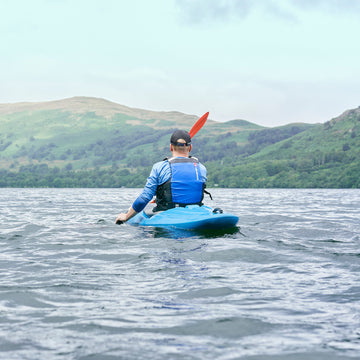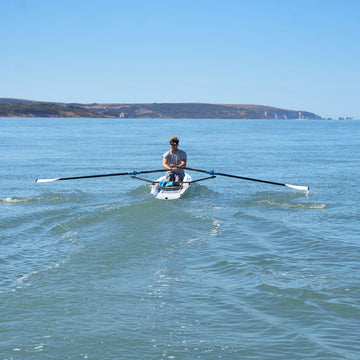
Leaks are bad news but there are only so many places that water can possibly get into a Topper. You may even have a boat where you remove the bung and air gushes out, followed by water. Hard to believe that a Topper can be airtight but not water tight isn't it!
The view is that when the boat is left out in the sun the air inside gets hot. Where the hull is airtight and then put onto cold water the air contracts and creates a vacuum. When the boat flexes in the waves, water is sucked in! The following things need to be done before you panic.
- Put some positive pressure into the boat, even lung pressure is enough but a RIB pump is even better (not too much pressure or you create a false environment or worse still the boat pops!)
- Apply washing up liquid & water with a sponge to the following areas:
2. The transom plate.
3. The join between the hull and the deck inside the plate case (after taking the hull plate off and the bladders out). See this video below:
4. The join around the rim with the boat upside down - especially the area around the painter hole.
5. The mast cup area - the mast cup may need to come out and may need replacing - Available from Rooster Sailing is the TOPPER A6AF MAST STEP CUP ASSEMBLY
6. The fairleads for the traveller and watch out for bubbles! If you can’t find the leak then it’s probably the mast cup assembly. It’s hard to simulate the action of the mast without sailing the boat. Repairs are as follows:
5. The mast cup area - the mast cup may need to come out and may need replacing - Available from Rooster Sailing is the TOPPER A6AF MAST STEP CUP ASSEMBLY
6. The fairleads for the traveller and watch out for bubbles! If you can’t find the leak then it’s probably the mast cup assembly. It’s hard to simulate the action of the mast without sailing the boat. Repairs are as follows:
Bailer
- If the bubbles show on the cockpit side of the boat then remove the bailer and use another gasket or replace the gasket with a sealant like Tikalflex.
- If they show on the hull side then it’s a bit more complicated - Remove the bailer and insert a screwdriver between the hull and the deck mouldings and remove the old gasket that Topper put in when they built the boat. Clean up and de-grease the area around the gasket and replace it with a fresh sealant. TIKALFLEX CONTACT POLYMER SEALANT is one of the best. Replace the bailer as above and tighten progressively.
- Tighten the screws. Replacement screws are the TOPPER Y11 TRANSOM SCREW - SINGLE
- If they fail to tighten and just continue to revolve then the captive nuts on the back of the inner plate are revolving and you have a bigger problem. New inner plate can be found here: TOPPER TT9A TRANSOM INNER PLATE
- This is the area under the top of the daggerboard case where the deck and hull join. You can remove the hull plate and the bladders that are behind the plate without worrying about any seals. Water flow in and out of this area when the boat is on the water.
- The trick here is to clean out (even open up) and dry the gap between deck and hull. Apply a bit of negative pressure to the hull at the same time as you apply TIKALFLEX CONTACT POLYMER SEALANT to the join.
- I might even undo some of the daggerboard case screws a bit and tighten them once the sealant is in place.
- The only way is to weld them. (I know of no sealant that works here but I rarely find this is a problem area anyway)
- Unless it’s the painter hole in which case a hot soldering iron rubbed around the inside of the hole can often work. Negative pressure to suck the molten plastic in is no bad thing again (make sure its dry and clean first and don’t get carried away!).
- When you can’t find a leak with the bubbles method then it’s often the mast cup area. We believe this is because you can’t simulate the action of the mast in the waves and water getting into the mast well area is getting past the cup.
- The only answer is to remove the cup and tighten the nut below the cup or better still replace the nut, washer, cup and sealing grommet with a little sealant around the grommet.
- These were a problem in a batch of Toppers where the insert were put in a little too far from the back edge of the boat. A little sealant on the thread of the screw will sort this one. Of course this also applies to any other screws that show bubbles but again unlikely as the holes for all fittings do not go through the hull (except the bailer, mast cup assembly and transom plate).
Dave & Adam Cockerill
















 Select Store
Select Store
 EU
EU
 US
US
